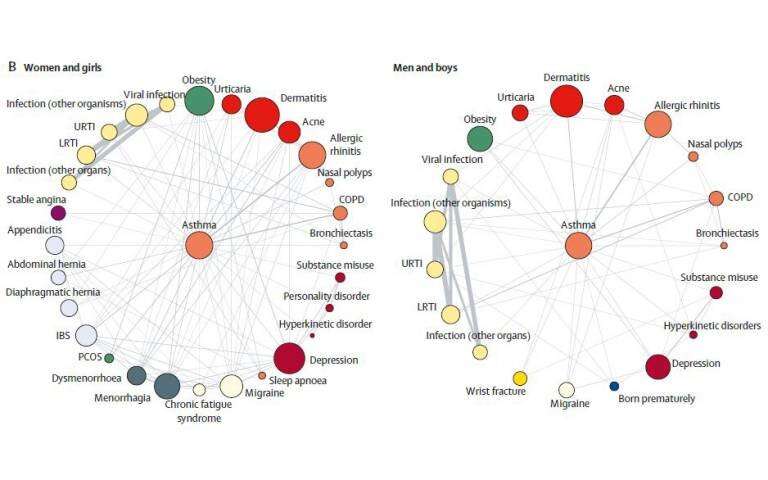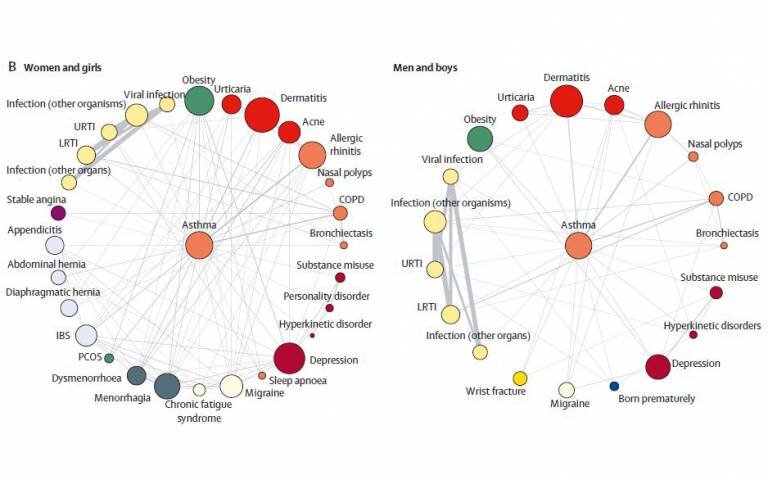
A new study led by UCL researchers has identified patterns in how common health conditions occur together in the same individuals, using data from 4 million patients in England.
With advancing age, millions of people live with multiple conditions—sometimes referred to as multimorbidity—and the proportion of people affected in this way is expected to rise over the next decades. However, medical education and training, health care delivery, clinical guidelines and research have evolved to focus on one disease at a time.
The Academy of Medical Sciences and the UK Chief Medical Officer (CMO) have recognized this problem and set out a challenge of investigating which diseases co-occur in the same individuals and why.
In the new study, published in The Lancet Digital Health, the team used routine health records data to systematically identify patterns of clustering of 308 common mental and physical health conditions of men and women of different ages and with different ethnicities.
Some patterns found include: heart failure often co-occurred with hypertension, atrial fibrillation, osteoarthritis, stable angina, myocardial infarction, chronic kidney disease, type 2 diabetes, and chronic obstructive pulmonary disease.
Hypertension was most strongly associated with kidney disorders in those aged 20–29 years, but with dyslipidaemia, obesity, and type 2 diabetes in individuals aged 40 years and older.
Breast cancer was associated with different comorbidities in individuals from different ethnicities, asthma with different comorbidities between the sexes, and bipolar disorder with different comorbidities in younger ages compared with older ages.
The findings, the researchers say, provide the data and resources to help improve health and care planning for patients in England living with more than one condition.
Co-author Professor Aroon Hingorani (UCL Institute of Cardiovascular Science) said, “Information from minority ethnic groups and younger people has often been missing from studies of multimorbidity, but by using diverse electronic health records, we present a more inclusive and representative perspective of multimorbidity. This is one area where the NHS electronic health records and data science can generate important insights.”
Professor Spiros Denaxas (UCL Institute of Health Informatics) said, “Millions of people live with multiple diseases, yet our understanding of how and when these transpire is limited. This research project is the first step towards understanding how these diseases co-occur and identifying how to best treat them.”
The study includes accessible tools to help users visualize patterns of disease co-occurrence, including for diseases that cluster more commonly than expected by chance, providing an entry point to investigate common risk factors and treatments.
Source: Read Full Article
